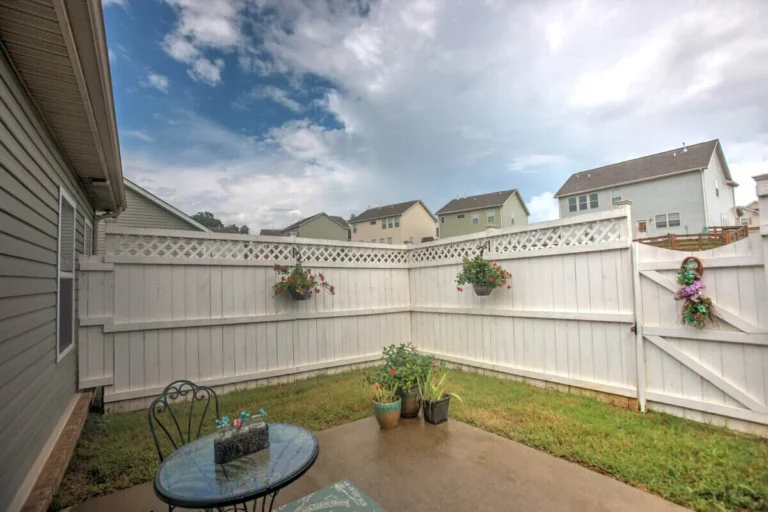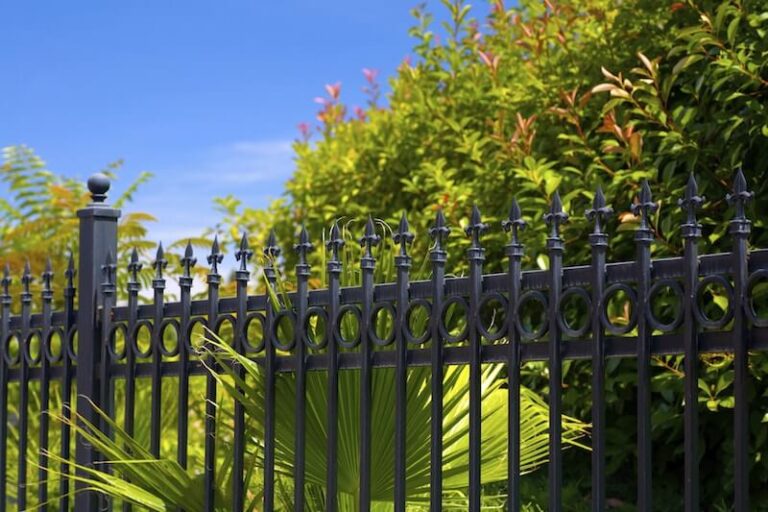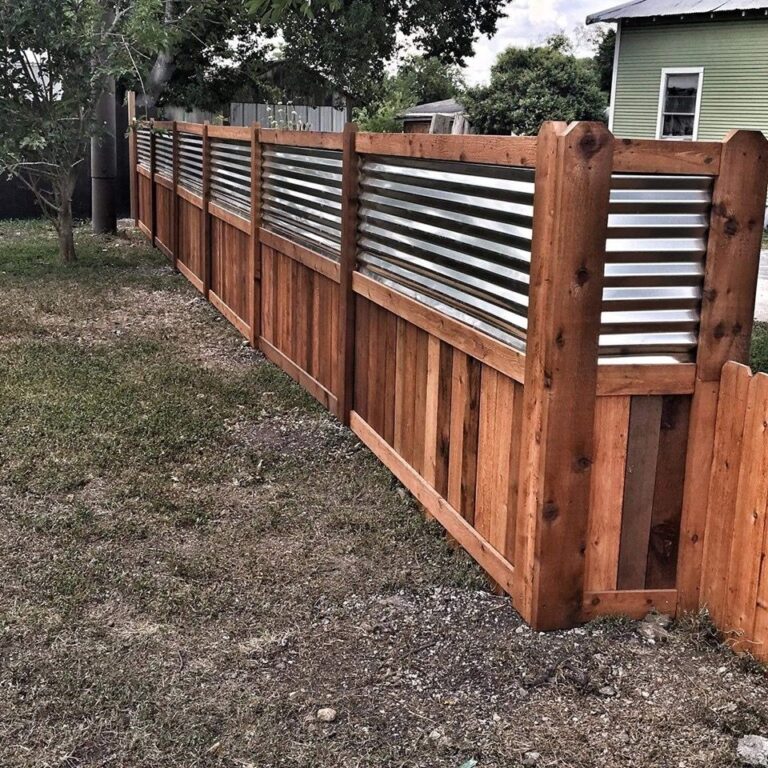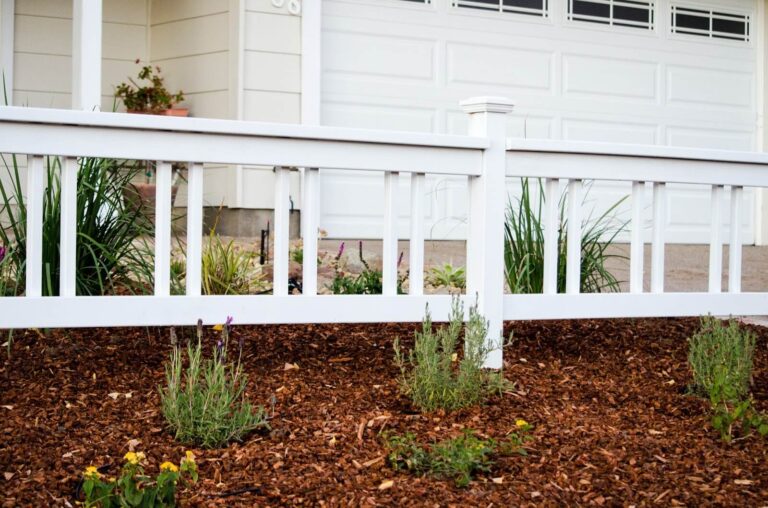To prevent rot in wooden fences, regularly apply a protective wood finish and sealant to create a barrier against moisture and decay. Inspect your fence for any signs of damage and promptly address any issues to prevent further deterioration.
Wooden fences can add beauty and privacy to your property, but they are also susceptible to rot if not properly maintained.
Rot can weaken the fence structure and compromise its integrity. By taking proactive measures to prevent rot, you can prolong the life of your wooden fence and save on costly repairs or replacements.
In this guide, we will explore effective methods to protect your wooden fence from rot, ensuring it remains a durable and attractive feature of your outdoor space for years to come.

The Impact Of Moisture On Wooden Fences
To prevent these issues, regular inspection, proper sealing, and maintenance are crucial.
It’s important to note that not all fencing solutions are created equal, especially when it comes to battling moisture and the elements.
For those in the San Mateo area, consulting with Trusted Commercial Fencing Experts in San Mateo can provide insights into the most effective materials and treatments for your specific environmental conditions.
These experts specialize in selecting and applying high-quality waterproof sealants and using pressure-treated wood, ensuring your wooden fences are optimally protected against moisture damage.
Effects Of Rain, Snow, And Humidity On Wood
Rain, snow, and humidity are common sources of moisture that can wreak havoc on wooden fences.
When exposed to these elements, wood absorbs the moisture, leading to swelling, warping, and eventually, rot.
Over time, this can weaken the structural integrity of the fence, making it susceptible to further damage.
Importance Of Proper Drainage And Ventilation
Proper drainage and ventilation are essential in preventing moisture buildup and preserving the integrity of wooden fences.
Ensuring that water can drain away from the fence prevents pooling, which in turn minimizes the risk of rot.
Additionally, adequate ventilation helps to reduce moisture trapped within the wood, further safeguarding against decay.
In conclusion, understanding the impact of moisture on wooden fences is paramount in ensuring their longevity.
By addressing the effects of rain, snow, and humidity and prioritizing proper drainage and ventilation, you can effectively prevent rot and preserve the beauty and functionality of your wooden fence.
Choosing Rot-resistant Wood For Your Fence
When it comes to preventing rot in wooden fences, choosing the right type of wood is crucial.
Opting for rot-resistant wood for your fence can help ensure its longevity and durability, saving you time and money on repairs and maintenance in the long run.
Types Of Rot-resistant Wood Species
Several wood species are naturally resistant to rot, making them excellent choices for fencing. Some of the most popular rot-resistant wood species include:
- Cedar
- Cypress
- Redwood
- Tropical hardwoods such as teak and ipe
These wood species contain natural oils and resins that make them resistant to decay, insect infestation, and moisture damage, making them ideal for use in outdoor environments.
Proper Sealing And Staining Techniques
Once you’ve selected a rot-resistant wood species for your fence, it’s essential to apply proper sealing and staining techniques to further enhance its resistance to rot and prolong its lifespan.
Sealing: Apply a high-quality wood sealant to protect the wood from moisture and UV damage. Ensure that all exposed surfaces, edges, and end grains are thoroughly sealed to prevent water infiltration.
Staining: Choose a quality exterior wood stain to enhance the natural beauty of the wood while providing an additional layer of protection against the elements. Regularly reapply the stain as recommended to maintain its effectiveness over time.
Regular Inspection And Cleaning Routines
Regular inspection and cleaning routines are essential for preventing rot in wooden fences.
By implementing a proactive approach, homeowners can maintain the integrity and longevity of their wooden fences.
Without regular inspection and cleaning, moisture, dirt, and debris can accumulate, leading to the development of rot.
Adopting a systematic approach to identifying early signs of rot and employing appropriate cleaning agents and tools is crucial for the preservation of wooden fences.
Identifying Early Signs Of Rot
Early detection is the key to preventing the spread of rot in wooden fences. Regularly inspect the entire surface of the fence for discoloration, soft spots, or an earthy smell, which are indicative of rot.
Pay close attention to areas where the wood comes into contact with the ground or experiences consistent moisture exposure.
Promptly addressing any signs of decay can effectively halt the progress of rot and preserve the fence.
Using Appropriate Cleaning Agents And Tools
When cleaning wooden fences, it is essential to use suitable agents and tools that effectively remove dirt and grime without causing damage to the wood.
Avoid harsh chemicals that can accelerate wood decay and opt for environmentally friendly cleaning solutions.
A mix of mild soap and water can be used to gently scrub the surface, followed by a thorough rinse with a hose.
Additionally, a soft-bristle brush or pressure washer set to a low setting can aid in removing embedded debris without compromising the integrity of the wood.
Applying Protective Finishes And Sealants
When it comes to ensuring the longevity and durability of your wooden fence, applying protective finishes and sealants is essential.
Protective finishes not only enhance the natural beauty of the wood but also provide a strong barrier against environmental elements, preventing rot and decay.
In this section, we will explore the importance of waterproofing and UV protection, as well as provide a step-by-step guide for sealing wooden fences to keep them looking pristine for years to come.
Importance Of Waterproofing And Uv Protection
Waterproofing and UV protection are crucial in maintaining the integrity of a wooden fence.
Waterproofing prevents water from seeping into the wood, which can lead to rot and decay.
On the other hand, UV protection shields the wood from the damaging effects of the sun, such as discoloration and deterioration.
By applying protective finishes that offer both waterproofing and UV protection, you can significantly extend the lifespan of your wooden fence.
Step-by-step Guide For Sealing Wooden Fences
When sealing a wooden fence, it’s important to follow a systematic approach to ensure maximum effectiveness. Here is a step-by-step guide to sealing wooden fences:
Prepare the Surface: Begin by cleaning the surface of the fence to remove any dirt, debris, and mildew.
This can be done using a gentle detergent and a scrub brush. Rinse thoroughly and allow the fence to dry completely.
Choose the Right Finish: Select a high-quality finish that offers waterproofing and UV protection.
Consider options such as stains, water repellents, or sealants that are specifically formulated for outdoor wooden structures.
Apply the Finish: Use a brush, roller, or sprayer to apply the protective finish evenly across the surface of the fence.
Ensure thorough coverage, paying special attention to the end grains and any exposed areas.
Allow for Drying: Allow the finish to dry according to the manufacturer’s instructions. This may involve applying multiple coats, each with its own drying time.
Regular Maintenance: Periodically inspect the fence for signs of wear and reapply the protective finish as needed to maintain optimal protection.
Role Of Proper Installation Techniques
Proper installation techniques play a crucial role in preventing rot in wooden fences. By following specific guidelines, you can ensure the longevity and durability of your fence, thus reducing the risk of rot.
Ensuring Adequate Distance From The Ground
To prevent moisture and decay, it’s essential to ensure that the wooden fence is installed at an adequate distance from the ground.
This can be achieved by using concrete bases or gravel for the posts, providing a solid foundation that reduces ground contact and minimizes the risk of rot.
A minimum clearance of 6 inches is recommended to prevent the bottom of the fence from being exposed to moisture and potential rot.
Using Stainless Steel Fasteners And Hardware
An often overlooked aspect of preventing rot in wooden fences is the choice of fasteners and hardware.
By using stainless steel fasteners and hardware, you can significantly reduce the risk of corrosion, which can weaken the structure of the fence and make it more susceptible to rot.
Stainless steel is highly resistant to rust and corrosion, making it an ideal choice for outdoor applications.
Implementing Effective Drainage Solutions
Effective drainage solutions are paramount in preventing rot in wooden fences.
By implementing efficient water diversion strategies, you can safeguard your fence from moisture damage. Here are some essential drainage techniques to consider:
Installing Gravel Or Crushed Stone Base
One effective method to improve drainage around your wooden fence is by installing a gravel or crushed stone base.
This base allows water to percolate through the soil, reducing the risk of water pooling around the fence posts.
In regions with heavy rainfall, a gravel base can provide the necessary support for proper drainage, ultimately protecting the wooden fence from potential rot.
Incorporating Efficient Water Diversion Strategies
Incorporating efficient water diversion strategies is crucial for preventing moisture buildup around your wooden fence.
Redirecting water away from the fence through sloping the ground or installing French drains can effectively minimize the risk of standing water, mitigating the potential for rot and decay in the wood.

Frequently Asked Questions
How Can I Prevent Rot In Wooden Fences?
To prevent rot in wooden fences, make sure to use pressure-treated or naturally rot-resistant wood and apply a weatherproof sealant regularly.
What Are The Signs Of Rot In Wooden Fences?
Signs of rot in wooden fences include soft spots, discoloration, and the presence of mold or mildew. Regular inspections can help identify these issues early.
How Often Should I Inspect My Wooden Fences For Rot?
You should inspect your wooden fences for rot at least twice a year, preferably in the spring and fall, to catch any potential issues early on. Regular maintenance is key to preventing rot.
Conclusion
Incorporating these preventative measures can significantly extend the life of your wooden fence.
By regularly inspecting, cleaning, and treating your fence, you can minimize the risk of rot and decay.
Remember to address any issues promptly to maintain the structural integrity and aesthetic appeal of your fence for years to come.







